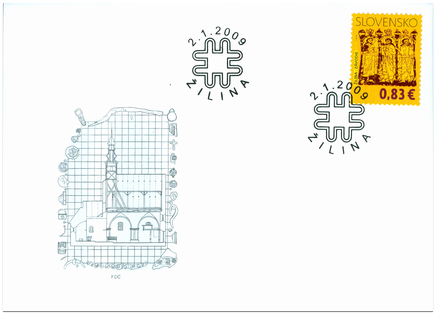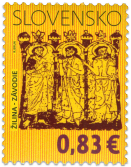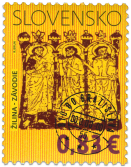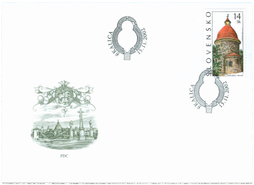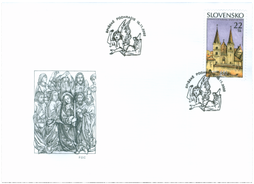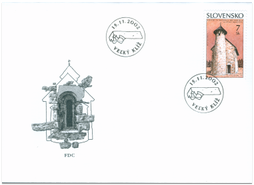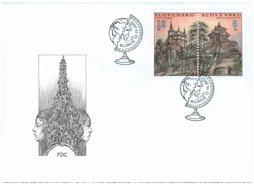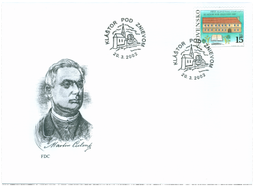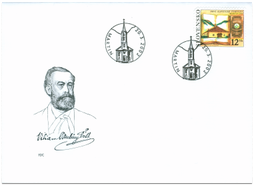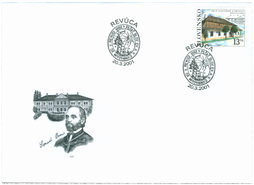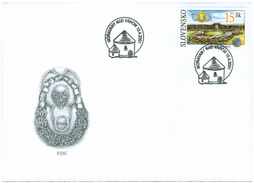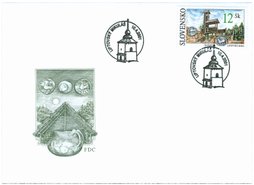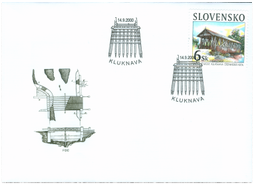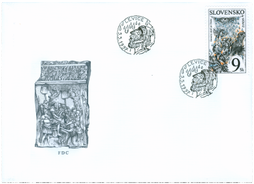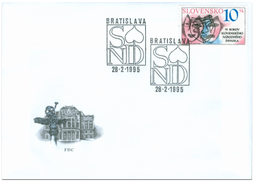FDC 446 Date of issue
02.01.2009 Face value
0.83 € Sell price
1.23 €
© Slovak Post, 2009 The church of St. Stephen the King represents a type of the Late-Romanesque one-nave church with an east rectangular presbytery and a semicircular apse. It was erected probably in the 50’s of the 13th century. According to one hypothesis, its present appearance could be also the result of two Romanesque construction phases. During the first one, a small one-nave church with an apse might have been build, i.e. the present eastern part of the church, and during the 2nd half of the 13th century it is supposed to have been enlarged by a new, more spacious nave to the west. Interesting not only thanks to its architecture, the Church of St. Stephen is distinctive also by wall paintings. It was in the eastern part of the church – in the presbytery and the apse – that several layers of wall painting decorations have been found. The two oldest ones are connected with Romanesque visual expression. The first one, dating back to the construction time (or reconstruction) of the church in the 2nd half of the 13th century, is remarkable thanks to the illusion it creates – the illusion of architectonic parts: painted vault hipcap and vault ribs on the apse of the half-dome replacing the real rib vaulting. Such a painting “illusion” of stone architectonic parts must have been a common phenomenon in those times, the reason being that it represented the simplest and cheapest way how to decorate the church by modern architectonic elements. Any prove to this has been preserved only rarely, the Church of St. Stephen being an exceptional illustrative example. To the end of the 13th century, more painting decoration has been added in the church presbytery. It captured traditional topic which was widely used on the Slovak territory: the central figure of Christ in mandorla depicted on the barrel vaulting is accompanied by apostles on side walls. Paintings are examples of Late-Romanesque broken style, common in Central European fine art of the 13th century – for which e.g. distinctive outlines or sharp drapery folds are typical. Bibiana Pomfyová
Show lessSimilar products
FDC 278 Date of issue
15.11.2002
FDC 279 Date of issue
15.11.2002
FDC 277 Date of issue
15.11.2002
FDC 273, 274 Date of issue
12.10.2002
FDC 261 Date of issue
20.03.2002
FDC 260 Date of issue
20.03.2002
FDC 259 Date of issue
20.03.2002
FDC 232 Date of issue
10.04.2001
FDC 231 Date of issue
10.04.2001
FDC 218 Date of issue
14.09.2000
FDC 118 Date of issue
05.05.1997
FDC 59 Date of issue
28.02.1995
© 2025 POFIS - Postal philatelic service. All rights reserved

